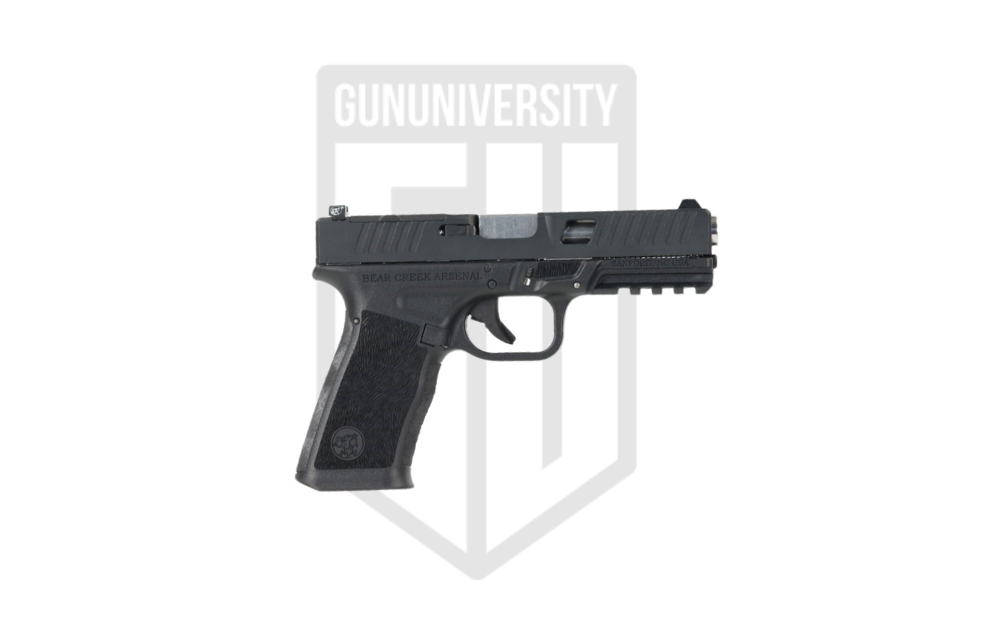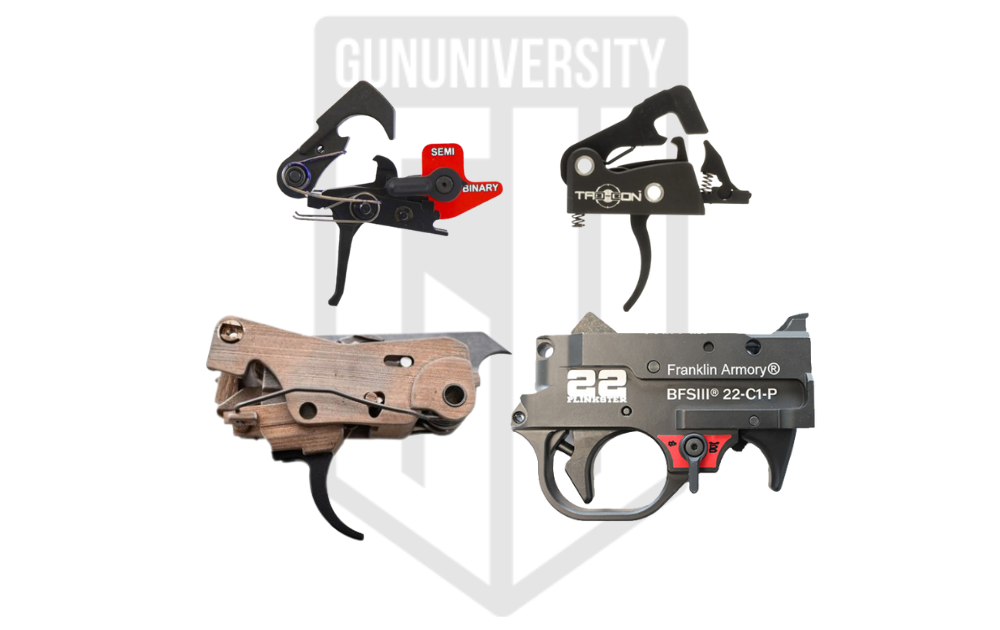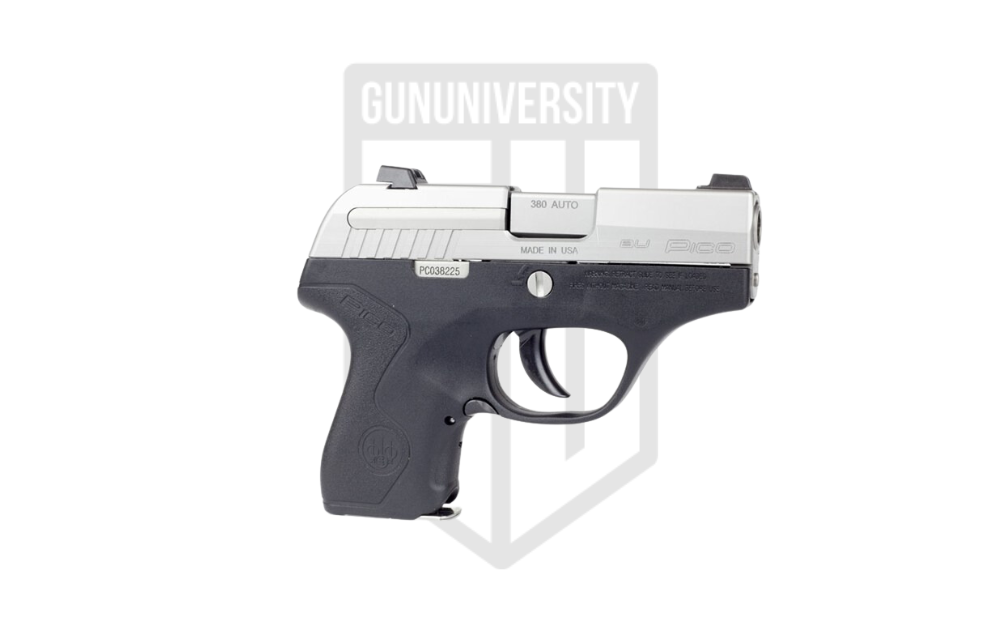[BREAKING] ITAR Firearms Regulations Significantly Lessened
A little over two years ago I wrote an article for Recoil Magazine about President Trump continuing President Obama’s push to lower restrictions on the firearm industry when it comes to export controls.
Yes, you read that right: President Obama attempted to lessen restrictions on the firearms industry through his administration’s Export Control Reform (ECR) initiative but wasn’t successful. And, President Trump continued the push but hasn’t been successful… until now!
Firearms are finally being moved out from under ITAR and over to the Commerce Department!
The final rule is finally being published in the Federal Register as a final rule sometime this week and it’ll go into effect 45 days later.
Some of you may not understand why I’m so excited and why I think something like a change to export control regulations is such a big deal for the firearms industry. If that’s you, read on…
In this update on export controls for firearms, we’re going to cover:
- Firearm Export Regulations (Previously)
- Export Control Reform Initiative
- Why Does Export Control Reform Matter to You?
- What the move of Firearms from ITAR to CCL Means
As a quick summary on what the move of firearms from ITAR means:
- Manufacturers will no longer have to pay a $2,250 annual registration fee
- America can be more competitive internationally without undue burdens
- No long approval process
- No Congressional approval needed for deals over $1 million
- Easier sharing of technical information for designs/R&D
- Easier training of our foreign allies
- Certain information can now be shared online (e.g. 3-D printed gun plans)
If this is the kind of information that you like to know about, be sure to sign up for our newsletter at the bottom of this article.
Firearm Export Regulations
The export of firearms and related parts/accessories and even information about making and using firearms (training and data) have been regulated by two different federal agencies: the State Department and the Department of Commerce.
Each agency has its own set of regulations governing what is controlled and how it must be exported.
Up until this change, the Department of State regulated exports of most firearms and their related parts, ammo, and information through their International Traffic in Arms Regulations (ITAR) which contain a list of covered firearm types called the United States Munitions List (USML). The USML includes all rifles, handguns, and short barreled shotguns (those with a barrel length less than 18″).
The Department of Commerce (Commerce), on the other hand, has the Export Administration Regulations (EAR) which regulates the export of all firearm types on a list, called the Commerce Control List (CCL), including regular shotguns (those with a barrel length of at least 18″) and their related parts, ammo, and information.
| Agency | State | Commerce |
| Regulations | ITAR | EAR |
| Firearms List | USML | CCL |
The difference between State and Commerce regulations is major for the firearms industry. In addition to the firearm types listed above, State also regulates the export of of significant military equipment like tanks and rocket launchers. The other items regulated by Commerce are literally every other item… including toilet paper. Naturally, State (and ITAR) has much tougher restrictions than Commerce (EAR).
These stricter rules are very burdensome on the firearms industry.
Export Control Reform Initiative
President Obama’s administration started the effort to move the firearms under ITAR over to the EAR. This effort was called the Export Control Reform (ECR) initiative.
While I worked for the National Shooting Sports Foundation (NSSF), we worked very hard on this issue. The firearms industry can thank Larry Keane, SVP and General Counsel (and my former boss), for continuing the fight on Export Control Reform with President Trump’s administration and helping to get the ball across the line for the firearms industry.
The entire Export Control Reform plan was to have “higher fences around smaller yards” thereby making tougher restrictions on only the things that actually need them.
ECR worked just fine for each of the other categories of items from from State/ITAR over to Commerce/EAR, however, the category for firearms has been significantly delayed.
Here’s what I wrote for Recoil late late September 2017:
“One by one, each category of ITAR controlled items was scheduled to be moved over. The proposed rules to move our industry’s category were drafted and ready to be publish in December of 2012. But then, something horrible happened- the Sandy Hook Elementary School shooting. Politics caused the move to be stalled. The Obama administration then tried to move our industry off of ITAR again three years later in December of 2015. But then something else happened, the San Bernardino shooting. Again, politics caused the rules for our industry to be stalled while the other categories were moved over to enjoy less restrictions. Now, almost two years since the last attempt, it appears that ECR for our industry is again getting some traction with the Trump administration.”
A week after I wrote about the previous delays of ECR for firearms due to mass shootings, another mass shooting happened delaying ECR for firearms again: the Las Vegas shooting.
Now, here we are again in the final steps of firearms moving from ITAR to commerce. The final rule has been signed and it is due to be published later this week.
Why Does Export Control Reform Matter To You
ITAR-level restrictions, that make sense for things like rocket launchers and tanks, placed a large burden on the American firearms industry.
The burdens on the American firearms industry were an inability to fairly compete on foreign contracts, significant compliance work for foreign visitors and shared information for vendors, and increased costs that were passed along to consumers.
In the international marketplace, foreign manufacturers knew that American companies could not deliver products quickly because of ITAR. They could easily suggest quick delivery in contract terms and thereby closed out American companies.
This is why some firearms manufactures have a foreign company and manufacturing location in addition to an American one – if the foreign company makes a foreign firearm, they don’t have to go over the same export hurdles that American companies do (did).
One example of this is the Congressional notification threshold. Under ITAR, contracts of over $1 million total needed actual Congressional approval! Congress not in session right now? Sorry, your customer will just have to wait.
Another burden caused by ITAR concerns foreigners and information. If you’re an FFL that is part of the RocketFFL compliance program, you already know that an export for ITAR information purposes isn’t really when something leaves the United States but rather when it arrives in foreign hands. So, if certain blueprints for a gun part were shown to a foreign person without an export license while they were here in America, then an export violation could have occurred.
Or, as a more tangible example for most, if information necessary for the manufacture of a firearm was shared online, it would be a deemed export because foreign eyes could see it. Remember the State department coming after Cody Wilson for 3D printed gun plans? The whole reason the plans were a legal problem to be posted online was because of ITAR. With the change, there will be no further restrictions on the publishing of firearm designs and plans online.
Of course, these things, and more, are very expensive to the firearms industry and therefore more expensive to consumers.
In addition to lower costs for FFLs and consumers, this is also going to help those who like to make their own firearms at home. Yes, contrary to popular belief, it is perfectly legal under federal law for an otherwise lawful individual to make their own firearm at home. In fact, we have an article that walks your through how to build your own Glock-style handgun piece-by-piece.
What the Move from ITAR to Commerce Means
Firearms are still regulated.
The move from ITAR does not change any significant gun control laws in America.
And, firearms are still regulated for exports.
However, instead of dealing with the ITAR rules and State Dept. licensing, the firearms industry will be able to use the more efficient export system through the Department of Commerce for most firearms. Certain firearms, like machine guns, will still stay under State department control (under ITAR).
If you’re a manufacturer FFL, you will not longer have to register with the Directorate of Defense Trade Controls (DDTC) per ITAR. This will be a great help to small-scale firearms manufacturers! Information like firearms plans can now be shared easily, including online, and foreigners can now visit a firearms manufacturing plant without special licensing.
This is HUGE for the industry.
ITAR Firearm FAQs
A: ITAR stands for the International Traffic in Arms Regulations.
A: Yes! Firearms are still regulated by the federal government. They have only been changed from one agency to another for the purposes of export control.
A: Yes, once the rule goes into effect, the restriction on sharing plans online will be gone.
A: The rule on moving firearms out from under ITAR will go into effect 45 days after it is published in the federal register (expected later this week).
Recent Posts
July 26, 2024
July 26, 2024
July 25, 2024


![The Best Shooting Hearing Protection in 2024 [Tested]](https://gununiversity.com/wp-content/uploads/2021/09/best-shooting-hearing-protection.jpg)


Ryan:
Good Day.
I have a small Vintage Firearms Refinishing Company located in Canada. We specialize in U.S. Military Weapons from late 1800’s through Vietnam Era but also repair virtually any type of Vintage Firearm.
I have 3 Questions. I’ve made many Calls to various U.S. Gov’t Departments but get contradictory Information so maybe you can help.
First Question is what procedures do I need to go through to permanently Export individual Firearms Parts, including Frames, Barrels, Slides but also Parts such as Stocks, Triggers, Sights, etc that I purchase either from a U.S. Company or at a Gun Show or even a private Citizen on Ebay? I can supply necessary Import Certificates from Canada.
2nd Question is how can I sell/Import individual Firearms Parts from Canada to U.S. Citizens? These would include Slides, Barrels, Frames, and Stocks, Triggers, Sights, etc.
3rd Question is how does a U.S. Citizen “temporarily” Export His/Her Firearm to me in Canada then back to the U.S. after Repairs are completed? We’ve done all these things in the past but I can’t get good Information about the new Regs and Laws.
Please advise.
Thanks…………Nick.
I’m happy to see that you are looking into this issue and are interested in handling things the right way. However, these are some fairly significant questions that shouldn’t be answered here. My advice is that you should seek out and hire legal counsel competent in these areas for advice that you can rely upon.
Ryan I’m in Australia and trying to get an Arca rail for my rifle from a US manufacturer. He thinks it is ITAR. I’m thinking it isn’t now.